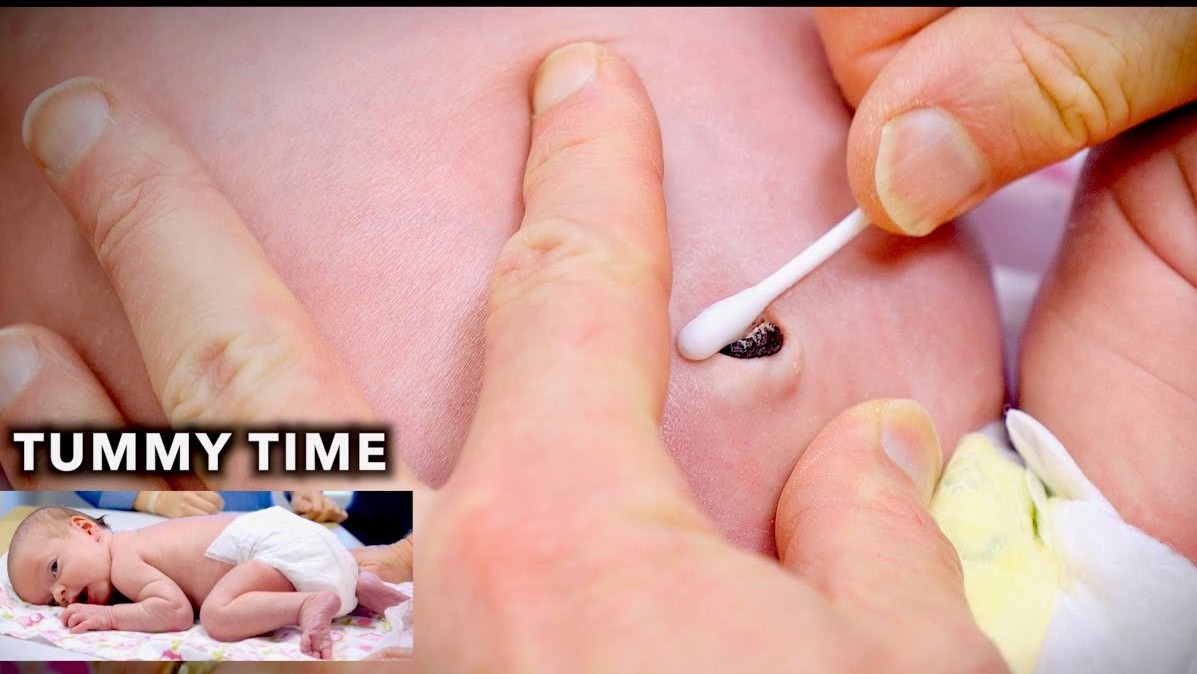Bringing a newborn into the world is a life-changing experience, and as a new parent, ensuring your baby’s health and well-being is a top priority. Among the many tasks you’ll encounter during the early days and weeks of your baby’s life, two important aspects that parents must pay attention to are umbilical cord cleaning and tummy time. These practices play crucial roles in maintaining your baby’s hygiene and promoting their physical development. In this article, we’ll explore these essential practices, offering guidance on how to handle both the care of the umbilical cord and the benefits of tummy time for your infant.
The Umbilical Cord: Care and Cleaning
The umbilical cord is a vital structure during pregnancy, connecting the baby to the placenta and providing nutrients and oxygen. After birth, the cord is no longer needed, and it’s cut in a quick and painless procedure. However, the remaining stump of the umbilical cord must be properly cared for to prevent infection and ensure it falls off naturally when the time is right.
1. When Does the Umbilical Cord Fall Off?
The umbilical cord stump typically falls off on its own within 1 to 3 weeks after birth. During this period, it’s important to keep the area clean and dry to minimize the risk of infection. In most cases, the cord stump will naturally dry out and detach without any intervention, but proper cleaning is essential to avoid irritation or complications.
2. How to Clean the Umbilical Cord
Cleaning the umbilical cord stump should be done with care, ensuring that the area remains free from moisture and dirt. Here are the steps for safe and effective cleaning:
- Wash Your Hands First: Before handling your baby’s umbilical stump, wash your hands thoroughly to avoid transferring germs.
- Use a Soft Cloth or Cotton Ball: Dampen a soft cloth or cotton ball with warm water. Avoid using alcohol or harsh antiseptics unless recommended by your pediatrician, as these can dry out the skin and delay healing.
- Gently Wipe Around the Stump: Gently clean the area around the stump, but avoid rubbing or scrubbing the stump itself. Be sure to remove any dirt or discharge that may accumulate at the base.
- Keep the Stump Dry: After cleaning, allow the umbilical stump to air dry. If you are using diapers, fold them below the stump to keep it from being covered by the diaper and exposed to moisture.
- Avoid Tight Clothing: Ensure that your baby is dressed in loose clothing so that the umbilical stump is not pressed or irritated. Tight clothing or diapers can slow the natural drying process.
3. Signs of Infection
In most cases, the umbilical cord stump will heal without complications. However, it’s important to watch for signs of infection, which can include:
- Foul-smelling discharge
- Redness or swelling around the base of the stump
- Bleeding that doesn’t stop after a short time
- Fever or irritability in the baby
If any of these signs occur, it’s important to contact your pediatrician immediately for further evaluation.
Infant Tummy Time: Building Strength and Motor Skills
Tummy time refers to the practice of placing your baby on their stomach while they are awake and supervised. This is an essential activity that promotes healthy physical development, helping babies to build muscle strength, coordination, and motor skills.
1. Why Is Tummy Time Important?
Tummy time plays a critical role in helping infants develop the muscles needed for rolling over, sitting up, crawling, and even walking. Here are some key benefits of tummy time for your baby’s development:
- Strengthens Neck, Shoulder, and Arm Muscles: When babies are placed on their tummies, they are encouraged to lift their heads and push up on their arms. This helps strengthen the muscles in their neck, shoulders, and arms.
- Prevents Flat Head Syndrome (Plagiocephaly): Babies spend a lot of time lying on their backs, especially while sleeping. Without sufficient tummy time, babies are at risk of developing flat spots on the back of their heads. Tummy time helps to relieve pressure on the skull and promotes a healthy, rounded shape.
- Improves Motor Skills: Tummy time encourages babies to reach and grasp, which helps develop hand-eye coordination and fine motor skills.
- Boosts Cognitive Development: As babies spend time looking around from different angles, tummy time stimulates their brain development, encouraging them to observe their environment and explore their surroundings.
2. When to Start Tummy Time
Tummy time should begin as early as possible, ideally from the first few days of life. Start with short sessions of 2-3 minutes at a time and gradually increase the duration as your baby becomes stronger. You can incorporate tummy time several times a day, ensuring that each session is supervised and the baby is awake.
3. How to Do Tummy Time Safely
To make tummy time enjoyable and safe for your baby, follow these tips:
- Start Slow: Begin with brief tummy time sessions, such as 2-3 minutes, and slowly increase the time as your baby gets used to it.
- Use a Soft, Clean Surface: Place your baby on a soft but firm surface, such as a play mat or a clean towel, to ensure they are comfortable and safe.
- Be Present: Always supervise your baby during tummy time. Never leave them alone on their tummy to prevent the risk of suffocation.
- Make It Fun: Encourage your baby by engaging with them during tummy time. You can use toys, mirrors, or even your own face to make it more interesting. Talking to your baby or singing to them can also help keep them engaged.
- Gradual Increase: As your baby becomes more comfortable with tummy time, you can increase the time spent on their stomach and introduce different variations, such as tummy time on your chest or lap.
4. When to Seek Help
If your baby seems excessively fussy or unable to tolerate tummy time after a few weeks, consult your pediatrician. Some babies may experience difficulty due to conditions such as torticollis (tightness in the neck muscles), and early intervention can help resolve any issues.
Conclusion
Both umbilical cord care and tummy time are fundamental practices that promote your baby’s health and development. Proper cleaning of the umbilical cord stump ensures a clean, dry healing process, reducing the risk of infection. Meanwhile, tummy time is an essential activity for promoting strong muscles, healthy head shape, and cognitive growth. By following the guidelines for both of these practices, you can ensure your baby’s early weeks are comfortable, safe, and full of opportunities for healthy development. If you ever have concerns, don’t hesitate to consult your pediatrician for personalized advice.



